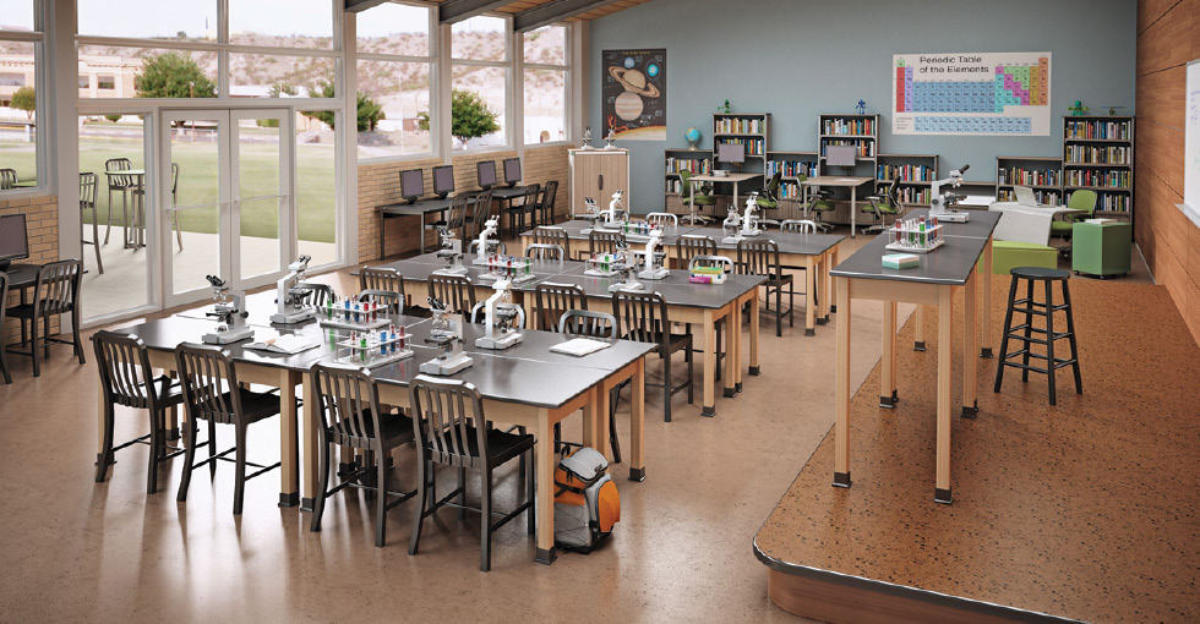In efforts to make our students more competitive in the global economy, educators and leaders have renewed focus on science, technology, engineering, and math—the areas in which America is seen as falling behind other countries. Those concerned with balance advocate for incorporating the arts into STEM.
Then there is career and technical education programs, which have enjoyed an increase in attention as the cost of traditional college has skyrocketed.
No matter whether your interest is in STEM, STEAM, CTE, or all of the above, the fact is that education needs to be more hands-on and experiential, requiring lab spaces up to the challenge. But not the lab spaces we grew up with…
The 21st century difference
The 20th century lab does not reflect the fact that every student walks into a school with an expensive piece of electronic equipment. For our modern devices, that lab could be outright dangerous. Our connected students require a rethought lab environment.
Yes, durability is still a concern. You will still see tabletops up to the task of experimentation, but those tables and their seating components need to be able to move in order to facilitate the collaboration viewed as essential for today’s students.
Modern labs are designed with devices in mind. Furnishings now feature spaces and components that allow devices to remain accessible, but still keep them out of harm’s way.
Speaking of technology, it tends to be just as much of a focus during a teacher’s presentation as a Bunsen burner. Instructional storage carts and presentation stations are not only movable within the room, but can also be moved to different classrooms easily—saving costs.
What kinds of work do these spaces facilitate?
Yes, science is the first component of STEM and STEAM, so there is still plenty of chemistry, biology, and physics in these 21st century lab classrooms. But there is also robotics, circuitry, 3D printing, and programming—all valuable skills for today’s students to master if they are going to compete globally for employment.
Yes, the primary goal of a lab environment is safety, just as it was in the last century. But this time, the goal is also safety for technology tools and the employment prospects of our students as they enter a more competitive, multicultural global economy.
Let us help with your next project!
Click here for more information about our furniture and design solutions.






Leave a Reply